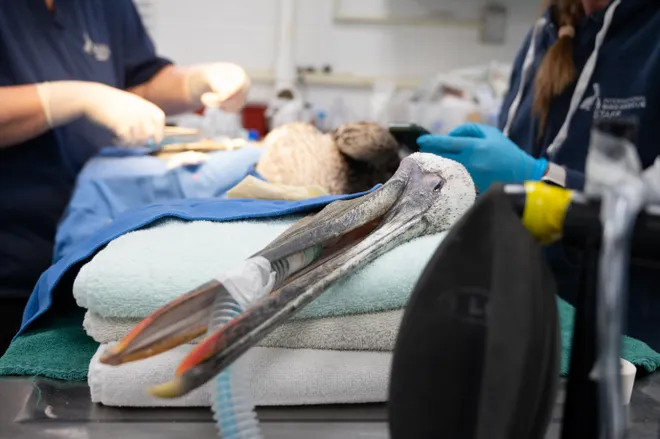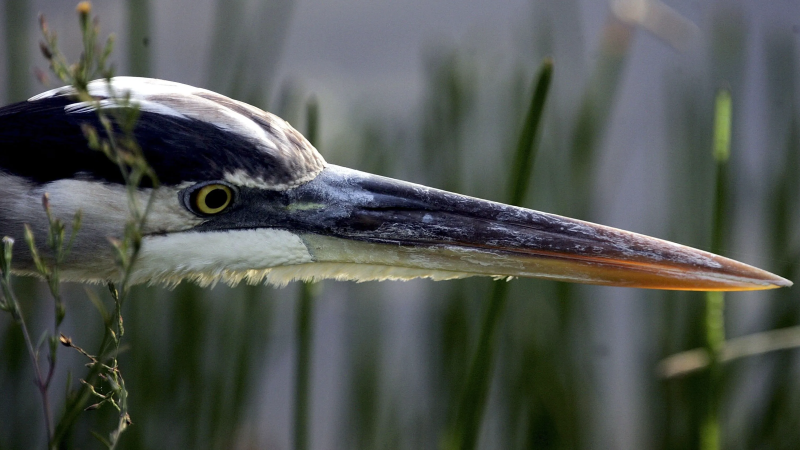Brown pelicans found 'starving to death' on California coast: Why it could be happening
Starving pelicans are being found stranded along California's coast, resembling the phenomenon that happened in 2022 when hundreds of birds were admitted to wildlife rehabilitation facilities.
From Santa Cruz County to San Diego County, emaciated California brown pelicans, a federally protected species, are being taken to rehab facilities in northern and central California, states a press release from the California Department of Fish and Wildlife.
“Most birds are coming in cold, emaciated and anemic – essentially starving to death,” said Dr. Rebecca Duerr, the International Bird Rescue’s director of research and veterinary science, in a statement. “Many of them are exhibiting severe injuries – especially from fishing hooks and line.”
According to the statement from the International Bird Rescue, from April 20 to May 6, it received over 110 pelican patients, as its two wildlife centers in California, and the increase in injured and starving birds are "causing real concern."
That number has almost tripled in the last 10 days, and the wildlife centers have received nearly 300 pelicans, Russ Curtis, the organization's spokesperson, told USA TODAY.
Kylie Clatterbuck, the manager of the organization's Los Angeles Wildlife Center, states that they "urgently need" donations to care for the sick birds that are coming in.
"As a non-profit we rely on the generosity of the public to help pay for additional medicine and the extraordinary cost of fish," said Clatterbuck.

Why is this happening?
The CDFW and the U.S. Fish and Wildlife Service are partnering with local wildlife rehabilitation facilities and other organizations to assess the situation, it said in a statement.
While conducting postmortem exams, the CDFW found that the pelicans were dying because of complications related to starvation.
Rehabs are also seeing birds come in with anemia and dehydration.
Why are pelicans starving to death?
While the pelicans' food sources do seem to have numbers, heavy winds or rough seas could affect the birds' ability to dive for their primary food, sardines, mackerel and anchovies, reports VC Star, part of the USA TODAY Network.
"It appears that when pickings are slim in the ocean that they start taking more risks," Duerr said.
Risk-taking the birds deem necessary for survival could be the reason why so many are coming in to facilities with fish hooks and other secondary injuries, states VC Star.
How to help an injured pelican
First, officials asks the public not to do any of the following to the pelicans:
- Touch
- Harass
- Feed
- Take photos with the pelicans
- Attempt to remove any fishing lines or embedded fishing hooks
Instead, the CDFW recommends people report an injured or debilitated bird to a local wildlife rehab facility or to the regional CDFW office.
If the pelican has succumbed to its injuries, people can report the death to CDFW’s Wildlife Health Laboratory using the mortality reporting form. The agency states this will help biologists monitor the event and asks the public to include photos if possible.
Last, people can support local facilities that are taking brown pelican patients by contacting them and asking what they need.
According to a statement from the Santa Barbara Wildlife Care Network, money donated to the organization goes to buying the "food, fluids, and medications these birds needed to make a full recovery."

A similar event happened with pelicans in 2022
According to the CDFW, a similar stranding event happened in the spring of 2022. Almost 800 pelicans were admitted to wildlife rehab facilities and 394 returned to the wild successfully.
It states that other stranding events that occur on the California coast have been documented periodically.
Brown pelicans were listed on the endangered species list in 1970 because of the toll a now-illegal pesticide, DDT, took on the bird's population, reports VC Star.
The species was removed in 2009 when its population recovered, but it is still being monitored, states the U.S. Fish and Wildlife Service's website.
Contributing: Cheri Carlson, Ventura County Star
Disclaimer: The copyright of this article belongs to the original author. Reposting this article is solely for the purpose of information dissemination and does not constitute any investment advice. If there is any infringement, please contact us immediately. We will make corrections or deletions as necessary. Thank you.




